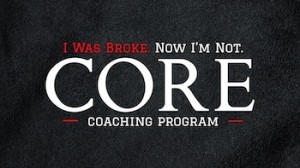Finance
SERIES: The Reluctant Spouse – Part 2
Welcome to the latest series at JosephSangl.com – “The Reluctant Spouse”
Perhaps the most challenging issue I face as a financial author, teacher, and coach is “the reluctant spouse.” One spouse wants to prepare and live by a budget, invest, save, give, and live frugally. Meanwhile, their spouse is very reluctant to participate in the budgeting process and routinely makes contradictory financial decisions. In this series, I will share some tips and ideas to help bring the reluctant spouse on board as an active and willing participant in financial decisions.
Part Two Quietly live the financial principles in your own life.
This is very important. Asking your reluctant spouse to take financial steps you are unwilling to take yourself is the very definition of hypocrisy.
If you are asking your spouse to prepare and live by a budget, be certain to prepare and live by a budget each month. Of course, there will be certain categories that your spouse will not follow. For the categories you can control, live out the principles.
Notice the word “quietly” in this key step. It is very unhelpful to announce, “I’m preparing a budget like Joseph Sangl says we should.” or “I’m attacking debt like Dave Ramsey instructs.” or “I called Suze Orman, and she said we can not afford to buy that item.” It only makes a reluctant spouse dislike the financial teacher!
Here are some quiet ways to employ financial principles:
- Prepare a budget and post it in a visible place. As you pay bills, mark them off. This demonstrates active utilization of the budget without saying a word.
- Utilize one of our free “Savings Spectaculars” (opens in new tab) and begin saving for a dream you both share (like a Disney cruise).
- Use cash envelopes to manage impulsive spending categories like groceries, restaurants, clothing, entertainment, and spending money. I’ve prepared a short video HERE (03:16) that teaches how to implement this system.
- Write down your plans, hopes, and dreams. Post in a visible location (like the refrigerator) and include some blank lines and a pen. Perhaps they might feel compelled to include a few of their dreams on your list! As a bonus, put the cost of each dream next to each one.
- Be nice. Nagging automatically moves people to become defensive.
In Part Three, I’ll be sharing a way to invite your reluctant spouse into the conversation.
Read the entire series (available after 10/21/2014)
SERIES: The Reluctant Spouse – Part 1
Welcome to the latest series at JosephSangl.com – “The Reluctant Spouse”
Perhaps the most challenging issue I face as a financial author, teacher, and coach is “the reluctant spouse.” One spouse wants to prepare and live by a budget, invest, save, give, and live frugally. Meanwhile, their spouse is very reluctant to participate in the budgeting process and routinely makes contradictory financial decisions. In this series, I will share some tips and ideas to help bring the reluctant spouse on board as an active and willing participant in financial decisions.
Part One Identify “WHY” your spouse is reluctant to participate in financial matters
This is an important moment for you. Consider the reason(s) your spouse may not want to participate in financial decisions. This is not an attempt to discover what is “wrong” with your spouse. The ultimate goal is to gain understanding.
As a financial coach, I’ve identified several reasons a person takes on the role of “The Reluctant Spouse”:
- Relationship Status Many times, financial behavior is an indicator of deeper relational issues. Are there areas of your marriage that need addressed? In a world full of blended families and past marriages, these past relationships can also play a role.
- Income Challenges When income does not meet expenses, it can cause some people to shut down completely. “There just isn’t enough money to manage,” they reason.
- Past Money Mistakes Has your spouse been burned by a financial decision they have made? Have you made a money mistake that has created a trust issue? Poor money decisions can cause some people to “freeze up” and choose to avoid them completely in the future.
- Upbringing Perhaps their behavior has been informed by their own parents. Maybe they saw all of the money decisions handled by one parent and honestly believe the same should be true for their own marriage. They may have been raised in a family that didn’t hear the word “no” used very often when it came to spending.
- Power Does your spouse feel like you are manipulating them to get something you want? Because money is attached to our hearts (read Matthew 6:21), it is powerfully and deeply connected into our plans, hopes, and dreams.
- Education Most people have had little money education. The feeling of ignorance can be very powerful and cause a person to feel the “fight or flight” defense mechanism.
- Embarrassment No one wants to be perceived as broke or unable to manage their money. We all want to be able to provide well for our family. When one doesn’t feel like they have done this very well, it can be embarrassing. This feeling is amplified if the “the exuberant spouse” is pushing “the reluctant spouse” to meet with a financial coach because they know they will be faced with their financial shortcomings.
- Financial Infidelity Perhaps there is a hidden financial decision that will have to be revealed once “the reluctant spouse” becomes an active participant. It could be a hidden debt, poor spending decisions, an addiction, or hidden income.
Which reasons apply to your reluctant spouse? Again, reviewing these reasons is not to be used as a way to identify “who is right” and “who is wrong.” The goal is to identify the key reasons causing your spouse to be very reluctant when it comes to money decisions.
The first step is to obtain complete understanding. In Part Two, I will reveal another key step you can take, and it’s about YOU – not your reluctant spouse!
Read the entire series (available after 10/21/2014)
15 of My Greatest Money Decisions
I’ve spent some time pondering the money decisions I’ve made since my “I Have Had Enough Moment” on December 2, 2002. Below is a list of several key moments that have helped me move into a fully funded life.
- Deciding to prepare a budget
- Contributing the maximum amount to my employer’s 401(k) (back when I was an employee)
- Working together with my bride to fund our dreams
- Diversifying my investments within the stock market
- Diversifying my investments beyond the stock market – land, businesses, etc.
- Making giving a top priority – to my church, people in need, and other causes my family chooses to support
- Automating my investments into a 529 college savings plan for my children
- Seeking wisdom from financially savvy leaders – both personally (local business leaders) and via financial teachers (Dave Ramsey, David Bach, Robert Kiyosaki, etc.)
- Tracking net worth on a monthly basis
- Building and keeping financial margin
- Establishing accountability for wise financial decision making
- Eliminating debt
- Starting a small business
- Purchasing a small business
- Relentless pursuit of more knowledge – living the life of a continual learner
Of course, there are many more decisions and moments that have helped me financially, but these particular have helped me tremendously.
What are the greatest money decisions you’ve made?
Ready to take your finances to another level? Check out the “Ultimate Financial Book Bundle Special” – where you can purchase a copy of each of my money books at a special bundle price!
Hire Me As Your Money Coach
In case you haven’t heard, registration is now open for the I Was Broke. Now I’m Not. Core Coaching Program (CCP) – my coaching program that includes 14 sessions taught over a year.
Over the past 12 years, my finances have changed dramatically. From having an average bank balance of $4.13 at the end of every month to owning several businesses. From attempting to teach myself financial principles to teaching hundreds of thousands each year.
It is my passion to help people accomplish far more than they ever thought possible with their personal finances. While I travel all over the U.S. and Canada teaching people about money, I’ve never lost my core passion to help people one-on-one – coaching them through their money journey.
When you sign up for the CCP, you are hiring me to be one of your money coaches. (You do have a money coach, right?) I have personally written each experience, and I teach every one of them. When you have a financial question, there’s a good chance I will be personally responding to it.
The 14 Core Lessons of the Core Coaching Program include:
- The Path The I Was Broke. Now I’m Not. Financial Freedom Ladder
- Dreams How to accomplish far more than you ever thought possible
- Budgeting How to budget in a way that actually works
- Saving Money 3 things everyone must save for
- Debt How to attack your debt and achieve financial freedom
- Investing All the way from investing “basics” to “advanced” investing
- Insurance Protecting your financial progress
- Comprehensive Financial Plan The most in-depth financial planning lesson you’ve ever received
- Net Worth How to calculate, track, and increase your net worth
- Children & Money Parents love this practical teaching that helps them prepare their children to win money.
- Wills & Estate Planning No one likes to think about it, but the day is coming for all of us. This lesson will equip you to have a rock solid end-of-life plan.
- Oxen Study #1 – Identifying Oxen Based on Joe’s book, Oxen, this coaching session will transform the way you think about money and help you identify incredible financial opportunities that could be right in front of you!
- Oxen Study #2 – Birthing, Acquiring, and Leading Oxen This session will equip you to acquire “oxen” that will carry your financial burdens for you!
- Next Level Thinking In this incredible final coaching session, Joe will share how he was able to transform from “broke thinking” to “financially free living.”
Upon successful completion of the program, you will even receive a graduation certificate!
If you are serious about taking your finances to another level and want to receive encouragement and accountability along the way, join the I Was Broke. Now I’m Not. Core Coaching Program.
NOTE: Only 150 spots were available for the CCP, and many of those have already been taken. Click HERE to learn more and to get started!
How To Recover From A Financial Mistake (Purchasing Car That Is Too Expensive)
This post is part of the “How To Recover From A Financial Mistake” series here at JosephSangl.com. Click HERE to read the entire series of posts.
Financial Mistake: Purchasing Car That Is Too Expensive
Raise your hand if you’ve ever made this mistake. I remember graduating college and running down to the car lot to purchase a new vehicle. My twin brother and I had been sharing two cars: a 1981 Datsun B-210 and a 1986 Pontiac Firebird. They weren’t in very good condition after enduring years of abuse from us.


I went to the new car lot and purchased a brand new 1997 Chevrolet Cavalier. I even bought one to reflect my allegiance to the mighty Purdue Boilermakers. It was painted black with a metallic fleck in it, and I had a gold pinstripe added to it to reflect the Purdue Black & Gold colors.

It was a financial mistake. With student loans, credit card debt, engagement and wedding ring debt, and an approaching wedding and honeymoon to help pay for, it turned out only to compound my financial woes.
So, how does one recover from this financial mistake? Consider employing one of the following methods.
- “Sell it” Method Sell the car, absorb the financial loss, and purchase a used car.
- “Attack the debt” Method Adjust budget so you can swiftly pay off the car and then drive it for at least four more years after completing pay-off.
“Sell it” Method This approach requires one to sell the vehicle immediately. For example, suppose a person recently purchased a new car for $25,000 with payments of $564/month for 48 months. They are experiencing great financial distress due to this purchase, but they owe more on the car than it is worth (also known as being “upside down” in a car). They have paid the debt down to $24,000, but the car is only worth $19,000. Here is how they can sell the car – even with this negative equity:
- Determine the true value of the vehicle. This is an important step. The owner of the vehicle will invariably over-value their car and potential buyers will naturally under-value it as they seek a good deal. Kelley Blue Book is a terrific resource for understanding the true market value of your vehicle.
- Find $7,000 to bridge the “negative equity gap” This could be a combination of a 401(k) loan, tax refund, selling some stuff, or working an extra job. This is a challenging step for many people, but it is definitely achievable!
- Find a buyer who will pay the true value of $19,000 for the car You will be able to put the $19,000 from the purchaser with $5,000 of the $7,000 you’ve gathered in Step #2 so the lender can be paid in full. This provides a clear title to the purchaser and eliminates your car note.
- Purchase an “I’m fixing my financial situation” car with the remaining $2,000 Now, it is imminently clear that a $2,000 car is nowhere near as nice as a $25,000 vehicle, but it is amazing on a budget.
- Save the monthly payment for the next two years and upgrade. By saving $564 for the next two years, this family will have $13,536 to upgrade their ride – with cash money and zero debt!
- Presto! You’ve fixed your financial mistake!
“Attack the debt” Method This approach requires diligence and changes to the monthly budget in order to pay off the vehicle in a swift manner. For example, suppose a person has purchased a $25,000 car of which they still owe $24,000. Their monthly payment is $564 for 48 months. Here is how they can fix their financial mistake.
- Eliminate costs from budget and apply savings to the car payment. Suppose this family decided to reduce their cable television services, eliminate their home phone, cease their gym membership they haven’t been using anyway, and reduce their visits to restaurants. By taking these steps, they are able to apply an extra $300 per month toward their car payment.
- Focus. Focus. Focus. Nothing of significance really happens without great perseverance. By sticking to this for just 29 months, the vehicle will be paid off!
- Drive the car for another 4 years and pay the car payment to yourself. Reward yourself for paying your car off by adding the $300 savings back into your budget for other items, but continue paying the $564/month payment to yourself. In just four years, you will have saved $27,072 for your next car!
- Presto! You’ve fixed your financial mistake!
If you are interested in learning how to take your finances to an entirely new level, I encourage you to check out the study I have written called I Was Broke. Now I’m Not. The study can be completed as a group or on an individual basis. If you are serious about changing your financial future, check out the study HERE.
